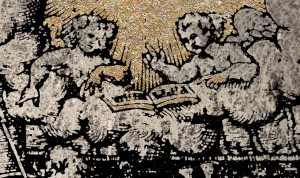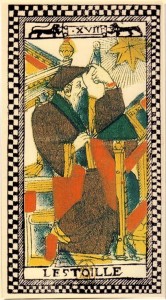Magnificat and Charpentier’s Noëls
 While I will miss the joy of sharing a full season of terrific music from the early Baroque with my colleagues and with Magnificat’s loyal audience next season, I am very pleased that I will be in California in December to lead Magnificat in a program that it very dear to me. In addition to my personal emotional connection with Charpentier’s music, his character and the circumstances in which he wrote, this particular program represents a fascinating period of discovery for me personally.
While I will miss the joy of sharing a full season of terrific music from the early Baroque with my colleagues and with Magnificat’s loyal audience next season, I am very pleased that I will be in California in December to lead Magnificat in a program that it very dear to me. In addition to my personal emotional connection with Charpentier’s music, his character and the circumstances in which he wrote, this particular program represents a fascinating period of discovery for me personally.
The first music by Charpentier that I had the chance to perform was the Messe de Minuit (Midnight Mass) – a charming work that seamlessly weaves the folk melodies of noëls, already centuries old during the composer’s life with a rigorous contrapuntal ideal. While the Nativity Pastorale does not incorporate noël melodies like the Midnight Mass, there are striking similarities in the poetic imagery of the noëls and their musical character. In Magnificat’s first production of the Nativity Pastorale in 1993, we included several of Charpentier’s instrumental settings of noëls in addition to the Pastorale and I had the chance to learn about these remarkable melodies. I found the noëls especially intriguing because they provided a rare glimpse of the 17th century from a non-aristocratic perspective. Noëls were everyone’s music – nobility and peasants alike shared the joy of these infectious melodies and the often strikingly poignant poetry that these melodies set.
Noëls began to be compiled for mass publication almost as soon as the printing press technology reached France. For the first time books could be printed at a ost that made it possible for at least a large portion of the emerging middle class to purchase. Of course these ‘Bibles des noëlz” as they were often called contained only the words of the carols. Very few people who might buy such a book could read music notation and in any case everyone already knew the tunes, which were as familiar as the tunes of Old MacDonald or the National Anthem are to us. While Luther’s Bible may have been a common book in middle and working class households in Lutheran Germany, no such translation of the Roman Bible was widespread at the time in France.
Many of the noël melodies also served for different sentiments at different times of the year – with different words of course. For it was the melody that was ancient – the words were adapted to fit the occasion and indeed, some of the tunes I had first encountered as the equivalent of Christmas carols appear in the slapstick operas parodies that Magnificat performed later in the 90s. No reason to limit a good tune to one season of the year after all!
 We have used some of the images found in these mass-produced noël collections for earlier productions of the Nativity Pastorale and while for our first production in 1993 the program was assembled (by me) using a photo-copier, scissors, and tape, we now have the benefit of PhotoShop and our creative director Nika Korniyenko. The images reminded me of the first mass produced playing cards, also a 17th-Century French phenomenon. In both cases, while the wood-cut images are somewhat crude they are nonetheless extremely expressive and even mannerist in their exaggerated gestures and symbolism. The Tarot images have also featured in programs and brochures over the years.
We have used some of the images found in these mass-produced noël collections for earlier productions of the Nativity Pastorale and while for our first production in 1993 the program was assembled (by me) using a photo-copier, scissors, and tape, we now have the benefit of PhotoShop and our creative director Nika Korniyenko. The images reminded me of the first mass produced playing cards, also a 17th-Century French phenomenon. In both cases, while the wood-cut images are somewhat crude they are nonetheless extremely expressive and even mannerist in their exaggerated gestures and symbolism. The Tarot images have also featured in programs and brochures over the years.
The Nativity Pastorale was also my first encounter with the musicians of the household of Mlle de Guise, Charpentier’s patron upon his return from his studies in Rome with Carissimi. In Charpentier’s manuscript from these years he meticulously notes which of his colleagues at the Hôtel de Guise sang each of the parts – of course noting himself (“Charp”) for the haute-contre line. Knowing that this music was written to be performed by and for the composers’ friends was particularly satisfying for me and seemed to have a parallel with Magnificat as we grew over the years. Each of our three productions have included some new faces along with old friends, both in the ensemble and in the audience and it is with a sense of returning home to visit the family (in the best sense) that I look forward to coming to California for our performances in December.